There were countless gallows, gibbets and hanging
poles throughout England but of them all Tyburn Tree must be the most infamous.
The first recorded mention of Tyburn being used as a place of execution dates
from 1196, when William FitzOsbert, known as Longbeard, was drawn and hanged on
April 6th, so it seems reasonable to assume that it was being used
at some time a little prior to that date.
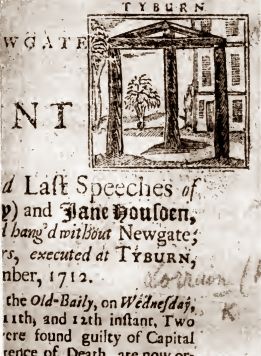 |
| The Triangular Tyburn Tree |
King William I (the Conqueror or the
Bastard, depending on your point of view), stopped the practice of capital punishment,
which may sound, at first, like a strangely humanitarian act for this vicious
bastard (well, there goes my stance on the matter), but actually William’s idea
was that instead of killing a criminal, he should be disfigured instead, by
having his eyes put out or a limb chopped off, so as to be a living, breathing
reminder to all of the King’s vengeance,
“…so that the trunk may remain alive as a sign of its crimes,”
as William’s law says. Henry I, in 1108,
re-instituted the death penalty, and it is probably from about this time that
Tyburn began to be used – Tyburn means ‘place of the elms’, and the elm
was a Norman symbol of justice.
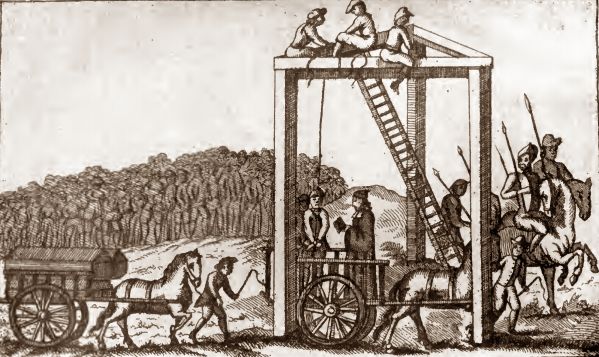 |
| Hanging at Tyburn |
We have no way of knowing what form the
original gallows at Tyburn took but we do know that in 1220, Henry III ordered the
building of a pair of replacement gallows, and we know that in 1571, the
familiar triangular frame was erected, which Shakespeare alludes to in Love’s
Labour’s Lost,
“Thou mak'st the triumviry, the corner-cap of society,The shape of Love's Tyburn, that hangs up simplicity.”
This triangular
tricorn hanged twenty-four men at a time (but could probably accommodate more),
and was first marked on a map of 1607, where, marked ‘Tyborne’, its shape can
be seen.
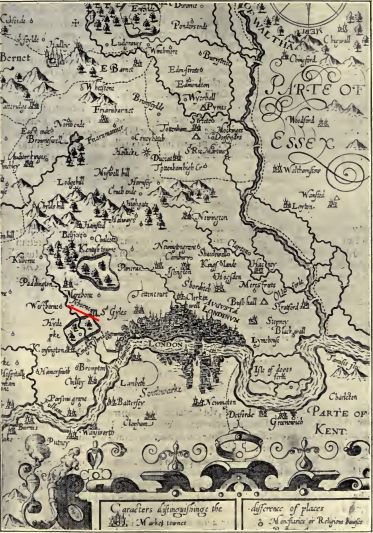 |
| 1607 Map - Tyborne underlined in red |
There would also have been gibbets at the same place, where the bodies
of the executed would be hanged in chains and displayed to the public until
carrion eaters and the weather broke them into pieces. So, just how many people
met their ends at Tyburn? We have a problem with the early years as only ‘special’
cases were noted in the assorted chronicles and annals that remain. Ordinary
criminals were not interesting enough to rate a mention so the information has
not been recorded.
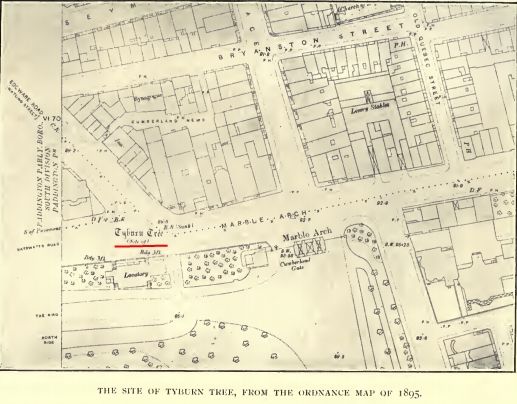 |
| Site of Tyburn on 1895 Ordnance Survey map |
In the first hundred years, from 1177 to 1273, there are
only eight executions at Tyburn that were interesting or unusual enough to
feature in the written record. These records come from the pens of monks and
favour the doings of the great and good and what effect they might have had on
the monastic house, so feature the treasons committed by nobles and so forth.
It is not until 1427 when a ‘common’ criminal is mentioned, in the secular
Gregory’s Chronicle, written by William Gregory, a skinner and Mayor of London,
“Ande that same yere a theffe that was i-callyd Wille Wawe was hangyd at Tyborne.”
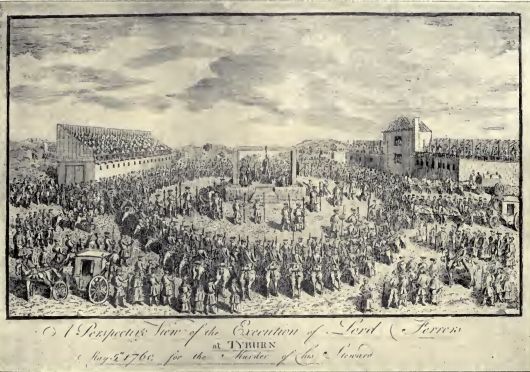 |
| Execution at Tyburn |
In later years we have some records from the four streams that
fed Tyburn; the courts of Westminster and the Guildhall, and the Middlesex and
Old Bailey sessions. The records from the Middlesex sessions of the 1570s,
reveal that 704 felons were sentenced to be hanged at Tyburn, which averages
out at seventy per year. Assuming that the other three courts were sentencing
at the same rate, we come to a figure of just over 280 per year. However, this
is pure speculation, as the number must necessarily have changed from year to
year, not least because of which crimes were deemed serious enough to merit a
capital sentence.
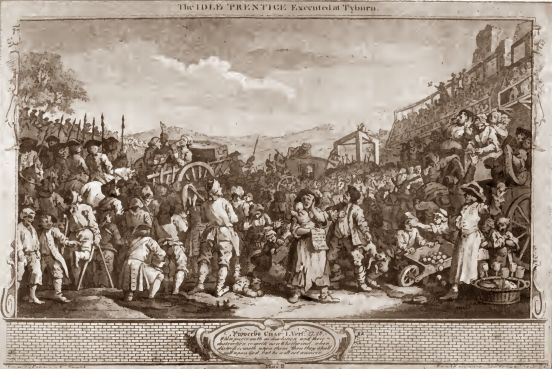 |
| Execution at Tyburn (after Hogarth) |
Over the years, Act was piled on Act and crime upon crime
until, for example, an Act of 1786 made the avoidance of duty a crime
punishable by death and so, in theory at least, the forgery of a penny stamp
could result in a death sentence for the forger. Legal reformers saw the
madness of this and sought to instil a sense of perspective into the system –
Sir Thomas More, for example, wrote,
“… it is too extreame and cruel a punishment for thefte, and yet not sufficient to refrayne and withold men from thefte. For simple thefte is not so great an offense, that it owght to be punished with death.”
Of all the people hanged at Tyburn, perhaps the
oddest case occurred in December 1660, when both Houses of Parliament resolved
that the dead bodies of Oliver Cromwell, Henry Ireton, and John Bradshaw were
to be punished for the regicide of Charles I. On January 30th 1661,
this punishment was carried out. Here is a contemporary account,
“The odious carcasses of O Cromwell, H Ireton, and J Bradshaw drawn upon sledges to Tyburn, and being pull'd out of their Coffins, there hang'd at the severall Angles of that Triple-tree till Sun-set. Then taken down, beheaded, and their loathesome Truncks thrown into a deep hole under the Gallowes. Their heads were after-wards set upon Poles on the top of Westminster Hall.”
The permanent
Tyburn Tree remained in place for six hundred and fifty years, until 1759, when
it was replaced by a temporary structure that was erected when required then
dismantled and taken away until the next time.
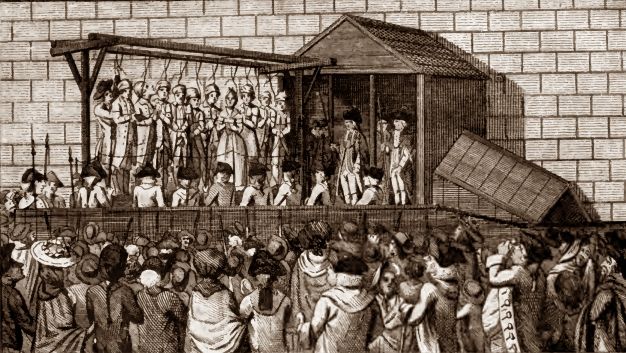 |
| The new gallows at Newgate |
Tyburn was the place of public
execution until 1783, the last execution took place on November 7th,
when John Austin was hanged for ‘cutting in a great manner’ and robbing
John Spicer. By then, the extents of city of London had extended to include
Tyburn and beyond, and the place of public execution was transferred to Newgate
prison, where a new gallows with a ‘drop’ was built and was first used on
December 9th 1783.
No comments:
Post a Comment